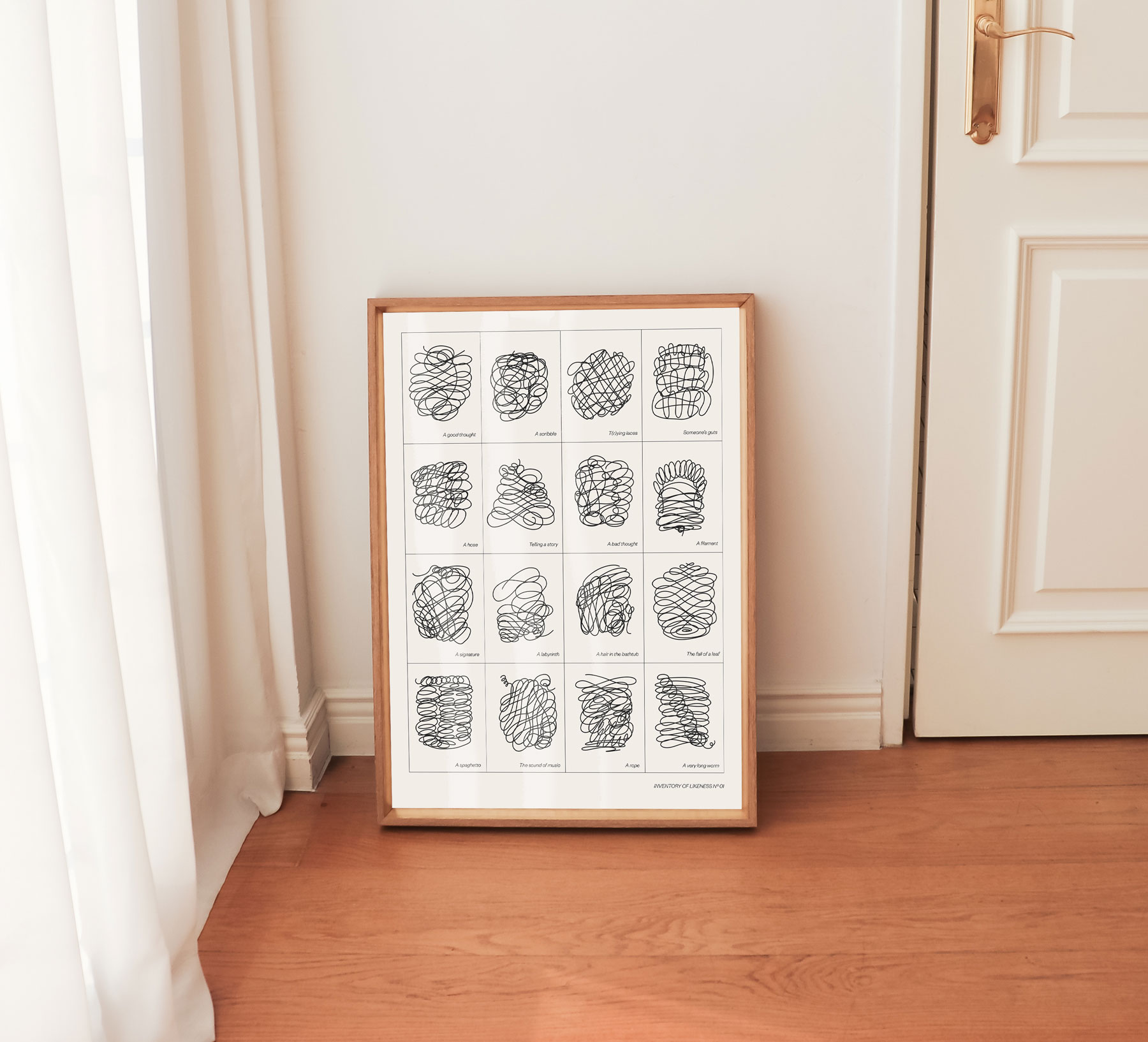Why Inventory of Likeness ?
“§4. Likenesses. Photographs, especially instantaneous photographs, are very instructive, because we know that they are in certain respects exactly like the objects they represent. But this resemblance is due to the photographs having been produced under such circumstances that they were physically forced to correspond point by point to nature.”
“§4. Likenesses. Photographs, especially instantaneous photographs, are very instructive, because we know that they are in certain respects exactly like the objects they represent. But this resemblance is due to the photographs having been produced under such circumstances that they were physically forced to correspond point by point to nature.”
Charles S. Peirce,
What is a sign ?
(1894)

Unlike Peirce’s photography, illustration cannot - and doesn’t need to - “correspond point by point to nature”. While the former capture loads of details, the latter takes shortcuts and flattens things out. This gap between reality and illustration, is to me where its power resides. By tuning out the superfluous, illustration makes the most of Likeness, the primordial kind of sign and creates new relations between signifier and signified.
![]()
Inventory of Likeness starts here, in semiotics, which I studied for years during my undergrad and M.Sc. in anthropology. I’ve always been fascinated how humans make sense of (visual) signs and how language plays a tremendous role in this process. In Inventory of Likeness, I try to exhaust the image, the likeness through attributing it as many meanings as I can think of. The bare black and white illustration helps widening the possibilies by giving as little cues about the “true” meaning of the sign.
Like seeing something from far away, or as a mirage in the desert, the signified eludes us, but instead of being because of a physical phenomenon, it is language that makes us uncertain of what we see. Language in this series plays the role of the authority. Caption is an authoritative practice that forces us to categorize, to circumbscribe visual experience.
![]()
Much like Gregory Bateson’s boot metaphor, Inventory of Likeness questions the power, and limits, of how we describe what we see. I see illustration as a semiotic practice that is at the core of how we develop our visual literacy. We learn how to see images thanks to illustrations because they are the perfect mix of closeness to and distance from their object for us to pause and reflect about how they are made.
This is why I went from a M.Sc. in anthropology to becoming an illustrator, to practice what I was observing as a researcher, to engage with people through images, challenge the way we see. In that way, I see my images as tools rather than mere aesthetic objects, or bit of both, they are aesthetic tools.
![]()
![]()

Inventory of Likeness starts here, in semiotics, which I studied for years during my undergrad and M.Sc. in anthropology. I’ve always been fascinated how humans make sense of (visual) signs and how language plays a tremendous role in this process. In Inventory of Likeness, I try to exhaust the image, the likeness through attributing it as many meanings as I can think of. The bare black and white illustration helps widening the possibilies by giving as little cues about the “true” meaning of the sign.
Like seeing something from far away, or as a mirage in the desert, the signified eludes us, but instead of being because of a physical phenomenon, it is language that makes us uncertain of what we see. Language in this series plays the role of the authority. Caption is an authoritative practice that forces us to categorize, to circumbscribe visual experience.

Much like Gregory Bateson’s boot metaphor, Inventory of Likeness questions the power, and limits, of how we describe what we see. I see illustration as a semiotic practice that is at the core of how we develop our visual literacy. We learn how to see images thanks to illustrations because they are the perfect mix of closeness to and distance from their object for us to pause and reflect about how they are made.
This is why I went from a M.Sc. in anthropology to becoming an illustrator, to practice what I was observing as a researcher, to engage with people through images, challenge the way we see. In that way, I see my images as tools rather than mere aesthetic objects, or bit of both, they are aesthetic tools.
︎